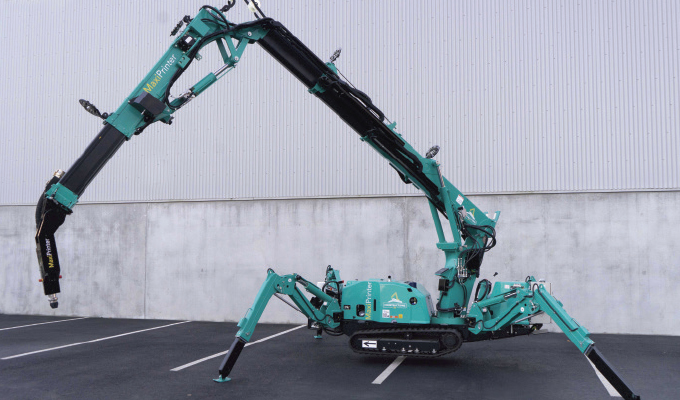According to the World Economic Forum, the construction industry accounts for about 27 percent of global carbon emissions, and traditional cement accounts for 8 percent of global carbon emissions. These emissions can be mitigated by using more sustainable, local materials and through 3D printing. Geopolymer International specializes in the research, development, and production of geopolymer-based sustainable construction materials.
“When compared to traditional construction methods, 3D printing can be more environmentally friendly in three key ways,” explains Geopolymer CEO Tarek Maassarani. “First, 3D printing is an additive process, meaning materials are deposited layer by layer, using only as much material as needed. This avoids all the waste resulting from on-site cutting, trimming, and fitting of materials in traditional construction.
“Second, innovative new 3D printing materials, such as our geopolymers, can be locally sourced, release significantly less carbon emissions in production, incorporate industrial and demolition waste, and last longer—even through fire, flood, and hurricane. All of these are considerable gains for sustainability.
“Finally, traditional construction methods involve multiple stages of assembly and transportation, from raw materials to finished products. 3D printing materials shrink supply chains, with a corresponding reduction in fuel consumption and greenhouse gas emissions.”
RANGE OF BENEFITS
Geopolymers offer a wide range of benefits such as greater strength, durability, and weather resistance, and 3D printing allows for sophisticated and customized designs. Geopolymer International offers a true geopolymer building material, which emits 80 percent less carbon dioxide than Portland cement. Geopolymers are made from locally sourced minerals, such as metakaolin from the Carolinas, and can be used in a range of construction projects to increase sustainability, decrease emissions, and cut construction costs.
Furthermore, Geopolymer International’s new collaboration with Constructions-3D, a pioneer in 3D printing, takes the innovation in construction one step further by offering construction companies and developers new models of 3D printers.
MAXIPRINTER
The MaxiPrinter is making waves throughout the industry, having printed the largest 3D printed building in the world (a Guinness world record) in Dubai (2023), the tallest building printed in 3D within the Citadelle des Savoir-Faire (2024), and the first French building printed in 3D within the Citadelle des Savoir-Faire (2019). The MaxiPrinter has no height limitations as it can be lifted to the next floor. It is fast, mobile, compact, precise, economical, suited for all-terrain, and can be used for indoor and outdoor construction. It can print with an internal diameter minimum of 16.4 feet and a maximum of 45.27 feet for a structure of 12.63 feet in height.
It has a usual printer speed of 3.94-5.91 in/s and a usual maximum vertical construction speed of 0.98-1.97 ft/h, though the parameter will be defined by the material used. The printer comes in a kit that includes one MaxiPrinter, an automated pumping system, a automated silo kit, remote-control screen, and C3D Slicer Software.
MINI TRUSS PRINTER
Geopolymer International also makes gantry or overhead-style printers with stage trussing, using different truss, motor/controllers, drives, and operating systems to customize the dimensions, functions, and strength of the printer to every builder’s needs. The company sells or leases truss printers as kits at the most competitive prices in the industry, making them perfect for universities and those eager to gain experience with 3D construction printing before making a larger investment.
Geopolymer International is engaged in research, development, and production of geopolymer-based sustainable construction materials, alongside the equipment to mix and print them. For more, visit www.geopolymerinternational.com.


